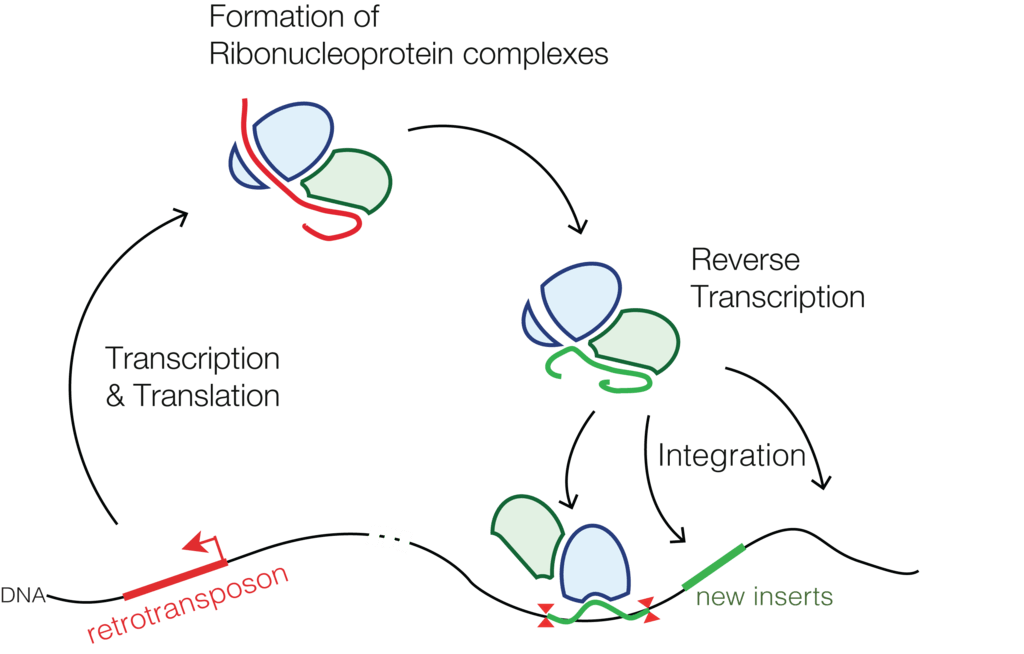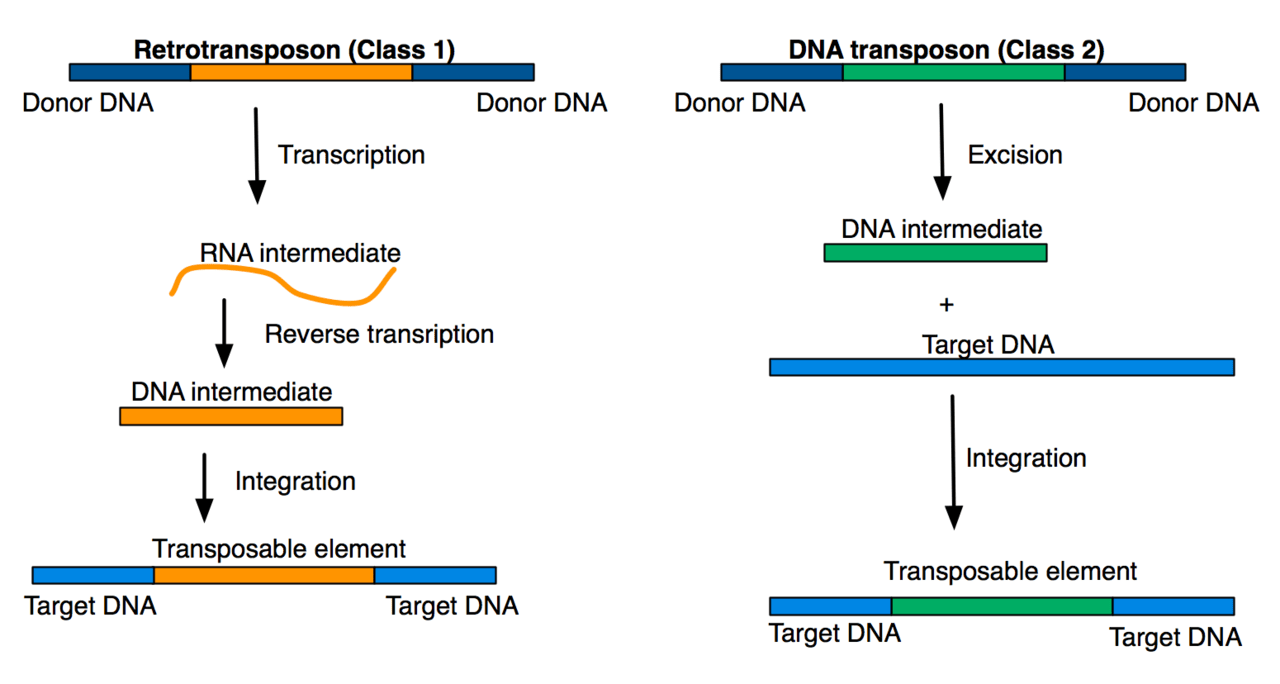What is the Difference Between Class I and Class II Transposable Elements
The key difference between class I and class II transposable elements is that class I transposable elements are retrotransposons, while class II transposable elements are DNA transposons.
A transposable element is a DNA sequence that can change its position within the genome. Sometimes it creates and reverses mutations. It can also alter the genetic identity and genome size of the cell. This process often results in the duplication of the same genetic material. The transposable element was first discovered by Barbara McClintock, and she won the Nobel prize for her discovery in 1983. Transposable elements can be categorized into two classes based on their transposition mechanism: class I and class II transposable elements.
CONTENTS
1. Overview and Key Difference
2. What are Class I Transposable Elements
3. What are Class II Transposable Elements
4. Similarities – Class I and Class II Transposable Elements
5. Class I vs Class II Transposable Elements in Tabular Form
6. Summary
What are Class I Transposable Elements?
Class I transposable elements are retrotransposons. Retrotransposon is a type of genetic component that copies and pastes itself into different genomic locations by converting RNA back into DNA through a process called reverse transcription. This process is catalyzed by the reverse transcriptase enzyme. Retrotransposon normally uses an RNA transposition intermediate. Class I transposable elements are usually copied in two stages. First, they are transcribed from DNA to RNA. Then the RNA produced is then reverse transcribed to DNA. Later, this copied DNA is inserted back into the genome at a new position. The characteristics of retrotransposons are very similar to retrovirus such as HIV.

Figure 01: Class I Transposable Element
Retrotransposons can be divided into three types.
Moreover, due to a similar mechanism with retrotransposons, retrovirus can also be considered as transposable elements.
What are Class II Transposable Elements?
Class II transposable elements are DNA transposons. Class II transposable elements have a cut and paste transposition mechanism that does not involve an RNA intermediate. The transposition is catalysed by several transposase enzymes. These enzymes can specifically or non-specifically bind to the DNA. Transposase makes a staggered cut at the target site of DNA that produces sticky ends. Then these cut out DNA transposon ligates into other target sites.

Figure 02: Class II Transposable Elements
Usually, DNA polymerase fills in the resulting gaps from sticky ends, and DNA ligase closes the sugar-phosphate backbone. Moreover, this transposition results in target site duplication. The insertion sites of DNA transposons can be identified by short, direct repeats followed by inverted repeats. But not all DNA transposons show a cut and paste transposition mechanism. For example, some transposons show replicative transposition in which transposons replicates themselves to a new target site.
Similarities Between Class I and Class II Transposable Elements
Difference Between Class I and Class II Transposable Elements
Class I transposable elements are retrotransposons, while class II transposable elements are DNA transposons. So, this is the key difference between class I and class II transposable elements. Furthermore, class I transposable elements use RNA intermediates in the transposition mechanism. On the other hand, class II transposable elements use DNA intermediates in the transposition mechanism.
The following infographic compiles the differences between class I and class II transposable elements in tabular form for side by side comparison.
Summary – Class I vs Class II Transposable Elements
Transposable elements are known as mobile genetic elements or jumping genes. They are DNA sequences. Transposable elements are categorised into two classes based on their transposition mechanism as class I and class II transposable elements. Class I transposable elements are retrotransposons, while class II transposable elements are DNA transposons. Thus, this is the key difference between class I and class II transposable elements.
Reference:
1. “9.6: Classes of Transposable Elements.” Biology LibreTexts, Libretexts.
2. Wessler, Susan R. “Transposable Elements and the Evolution of Eukaryotic Genomes.” PNAS, National Academy of Sciences.
Image Courtesy:
1. “Retrotransposons” By Mariuswalter – Own work (CC BY-SA 4.0) via Commons Wikimedia
2. “Transposable elements (2)” By Arvid Ågren and Andrew G. Clark – (CC BY 2.5) via Commons Wikimedia
ncG1vNJzZmivp6x7pbXFn5yrnZ6YsqOx07CcnqZemLyue9ahmK1lmah6tbTEZpuinpaav6a6wp5km52krLKmuoyco5qro2K2bq3NnWScpJGowG61yGarq5meqL2wv8Cbo55llaGyrrHNrapo